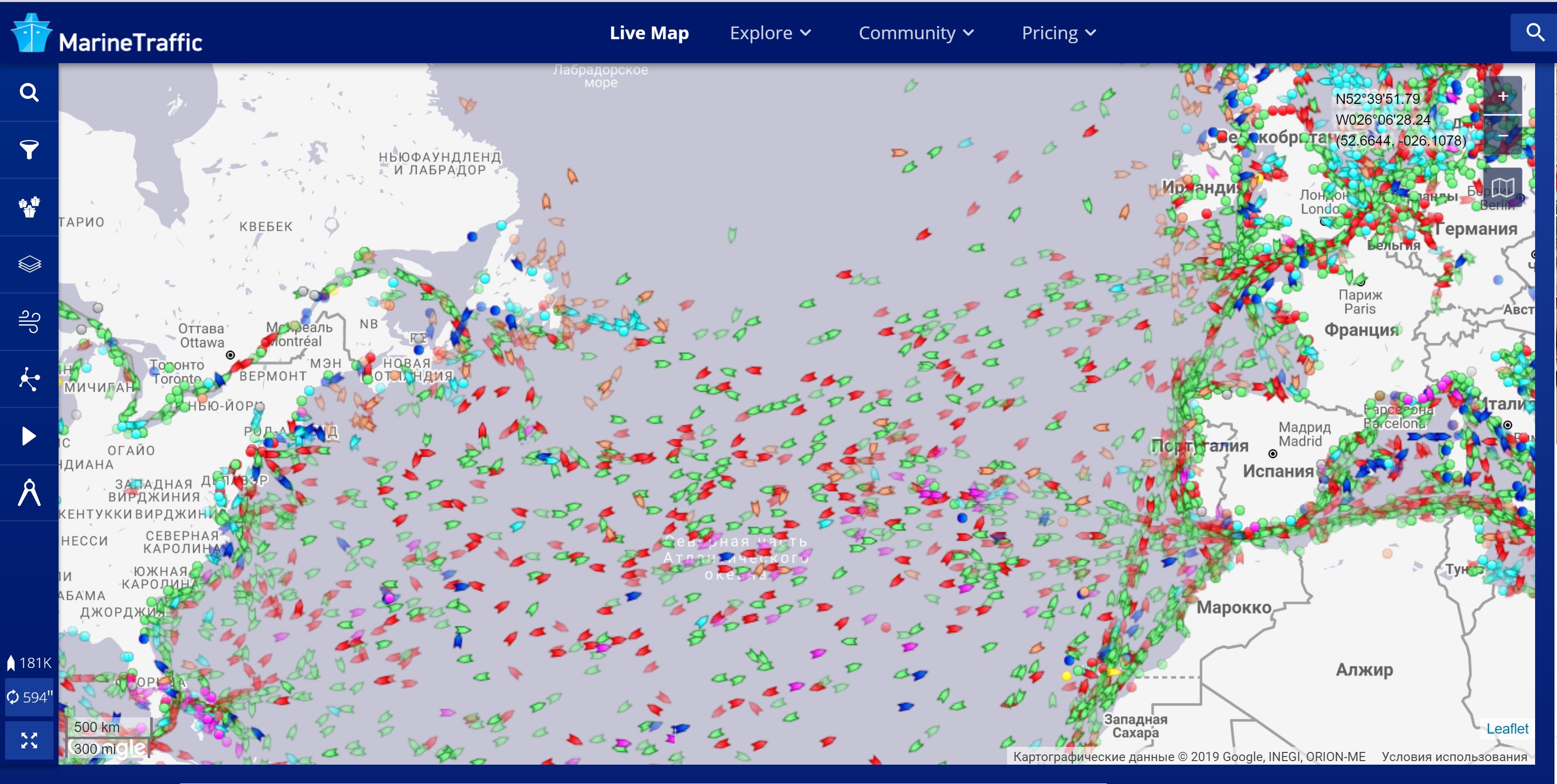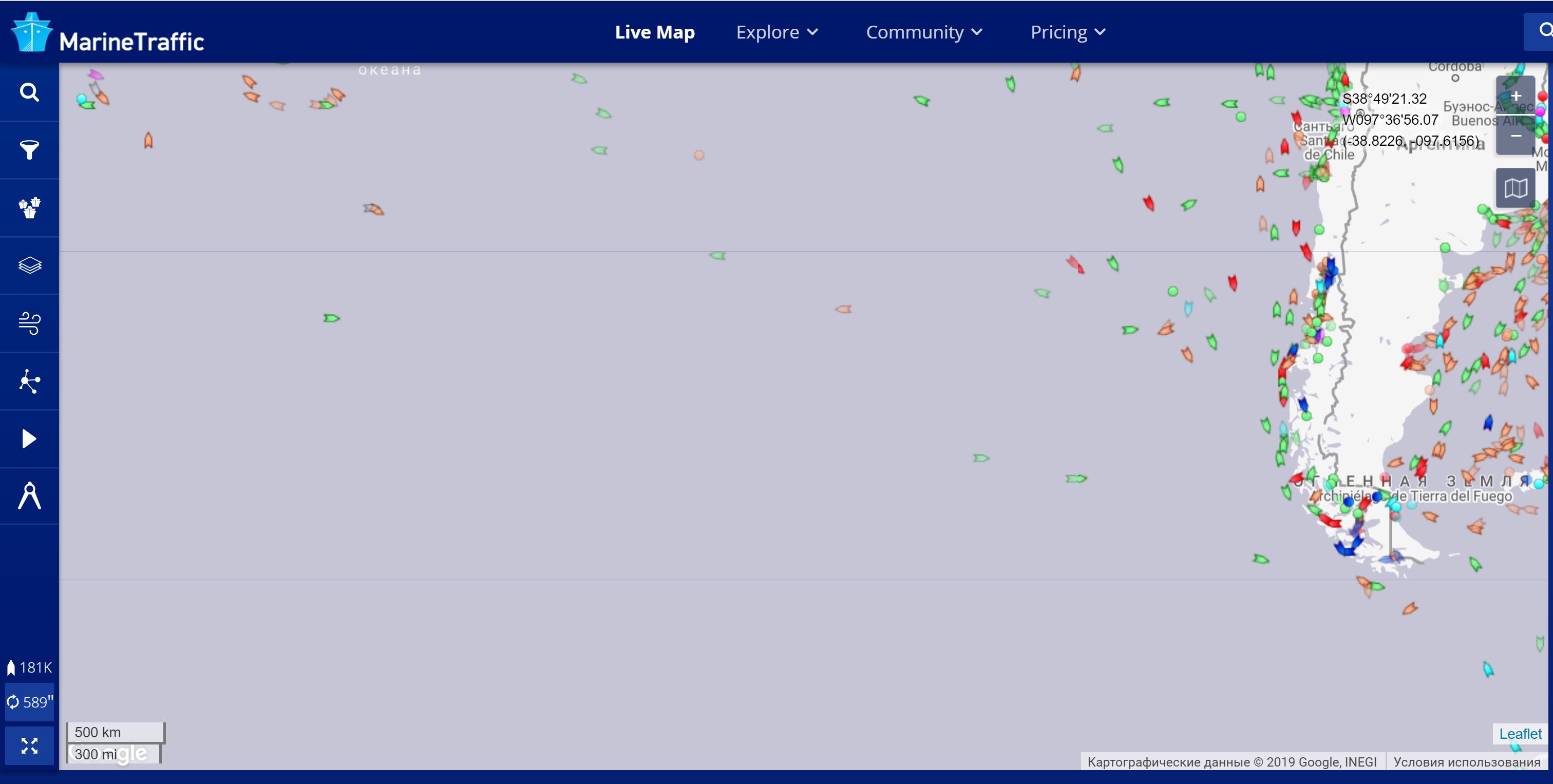Marine traffic in the Southern Ocean
FAQ. One of the frequently asked questions is: “why doesn’t Fedor see commercial or passenger ships on this journey?” The project team monitors the area of the Southern Ocean from New Zealand to Cape Horn daily, in order to notify Fedor of any approaching ships. A boat made of composite materials is not very noticeable on the radars of large ships, and we inform Fedor in advance that a ship with such and such MMSI number is catching up with his rowboat.
During the entire expedition, we observed marine traffic in the Southern Ocean and counted only 10 vessels that were proceeding along the same course as the rowboat “AKROS” – in the direction of the Drake Passage. The ships passed at a distance of 200-400 miles from his rowboat, so, there was no point in notifying Fedor of them, nevertheless, we have accumulated good statistics on the liveliness of shipping routes in the Southern Ocean.
Compare two screenshots from 19 April 2019 from the Marine Traffic site www.marinetraffic.com
The Atlantic Ocean. On this map, you can easily count 300 ships in the open ocean.
South Pacific. Closer to the coast of Chile there is a slight activity, but from the longitude of about 100 degrees west and further west towards New Zealand the corridor between 40 – 60 degrees southern latitudes is devoid of any shipping activity, and we have seen the same picture for many weeks.
In his previous expeditions, Fedor had to enter into radio exchange with passing ships to inform them that there was an ocean rowing boat with limited manoeuvrability and a 2-knot velocity. Traditionally, crews on ships take proper precautions, although there are times when the crew decides to get closer to the boat and take a look at the unusual watercraft, especially during the daytime. Such manoeuvres make Fedor worry. When a 300-meter long tanker begins to draw closer, it could be a scary sight as it blocks the wind, the waves and even the sun. Therefore, Fyodor is not very upset that he hasn’t seen many ships after his departure from New Zealand, but he will see more shipping activity closer to South America, including encounters with fishing vessels that are now actively fishing at the edges of the continental shelf.

